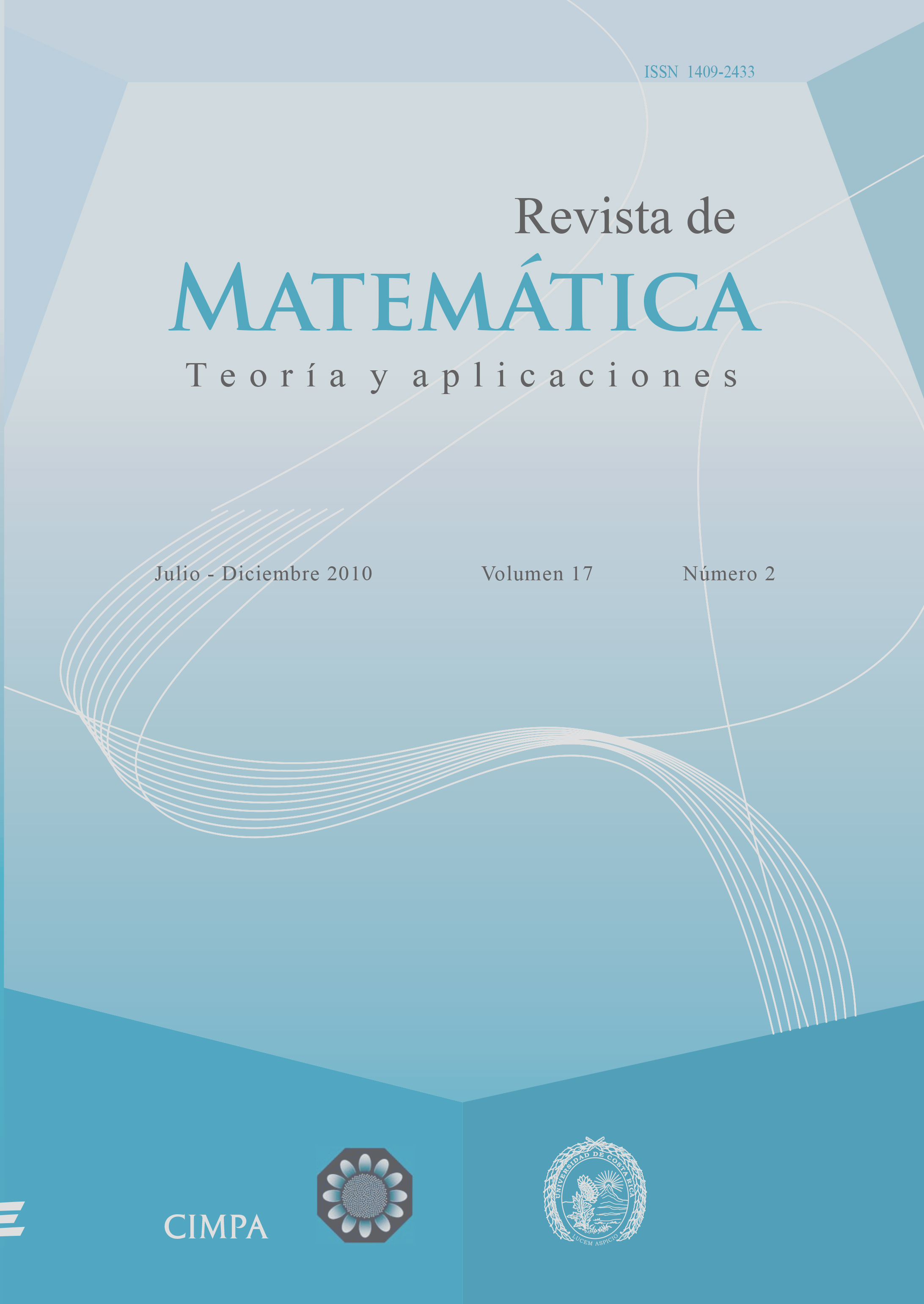Resumen
El proceso de validación de modelos matemáticos que describen aplicaciones prácticas implica, generalmente, la estimación de los parámetros desconocidos que en ellos intervienen. En este trabajo, con el fin de estimar estos parámetros en los modelos de VIH/SIDA de [7], se formula el problema de estimación de parámetros en ecuaciones diferenciales ordinarias de primer orden con punto inicial conocido y se presenta una estrategia de solución al mismo. Se verifica, además, cuál es, en algún sentido, el modelo de VIH/SIDA que mejor representa los datos reales existentes según la estrategia de solución.
Citas
Arazoza, H.; Lounes, R. (2002) “A non-linear model for a sexually transmitted disease with contact tracing”, IMA Journal of Mathematics Applied in Medicine and Biology19: 221–234.
Arazoza, H.; Lounes, R.; Hoang, T.; Interian, Y. (2000) Journal of Theoretical Medicine 2: 267–274.
Arazoza, H.; Lounes, R.; Pérez, J.; Hoang, T. (2003) “What percentage of the Cuban HIV-AIDS epidemic is known?”, Revista Cubana de Medicina Tropical, 55(1): 30–37.
Baden, N.; Villadse, J. (1982) “A family of collocation based methods for parameter estimation in differential equations”, Chemical ngineering Journal 23.
De la Cruz, H.; Biscay, R.; Carbonell, F.; Jiménez, J.; Ozaki, T. (2006) “Local linearization-Runge Kutta (LLRK) methods for solving ordinary differential equations”, ICCS, Part I, LNCS 3991, Springer- Verlag Berlin Heidelberg: 132–139.
Hsieh, Y.; Arazoza, H.; Lee, S.; Chen, C. (2002) “Estimating the number of Cubans infected sexually by human immunodeficiency virus using contact tracing data”, International Journal of Epidemiology 31: 679–683.
Hsieh, Y.; Arazoza, H.; Lounes, R.; Joanes, J. (2004) “A class of methods for hiv contact tracing in Cuba: implications for intervention and treatment”, Deterministic and Stochastic Models for AIDS Epidemics and HIV Infection with Interventions.
Jiménez, J.; Biscay, R.; Mora, C.; Rodríguez, L. (2002) “Dynamic properties of the local linearization method for initial value problems”, Applied Mathematics and Comp. 126: 63–80.
Lounes, R.; Arazoza, H. (1999) “A two type model for the Cuban national programme on HIV/AIDS”, IMA Journal of Mathematics Applied in Medicine and Biology 16: 143–154.
Marrero, A. (2000) Un Enfoque para la Solución Numérica del Problema de Estimación de Parámetros en Modelos Definidos por Ecuaciones Diferenciales Ordinarias. Tesis Doctoral, Universidad de la Habana.
Marrero, A.; Pedroso, L.; Barrios, J. (2006) “Algoritmos evolutivos en la solución de problemas de estimación de parámetros”, Revista de Matemática: Teoría y Aplicaciones, 13(2): 139–150.
Murray, J.D. (1993) Mathematical Biology I. An Introduction, 2nd edition. Springer, New York.
Onusida. http://www.unaids.org.
Shampine, L.; Reichelt, M. (1997) “The Matlab ODE Suite”, SIAM J. Sci. Comput. 18(1): 1–22.
The MathWorks, Inc. Optimization Toolbox User’s Guide: For Use with MATLAB. Version 3.
The MathWorks,Inc. Genetic Algorithm and Direct Search Toolbox User’s Guide. Version 2.
Tjoa, I.; Beigler, L. (1991) “Simultaneous solution and optimization strategies for parameter estimation of differential-algebraics ecuation systems”, Industrial Engineering Chemistry 30.
Vehreschild, A. (2004) The ADiMat Handbook.
##plugins.facebook.comentarios##

Esta obra está bajo una licencia internacional Creative Commons Atribución-NoComercial-CompartirIgual 4.0.
Derechos de autor 2010 Jorge Barrios Ginart, Aymée de los Ángeles Marrero Severo, Marta Lourdes Baguer Díaz-Romañach, Héctor de Arazoza Rodríguez





